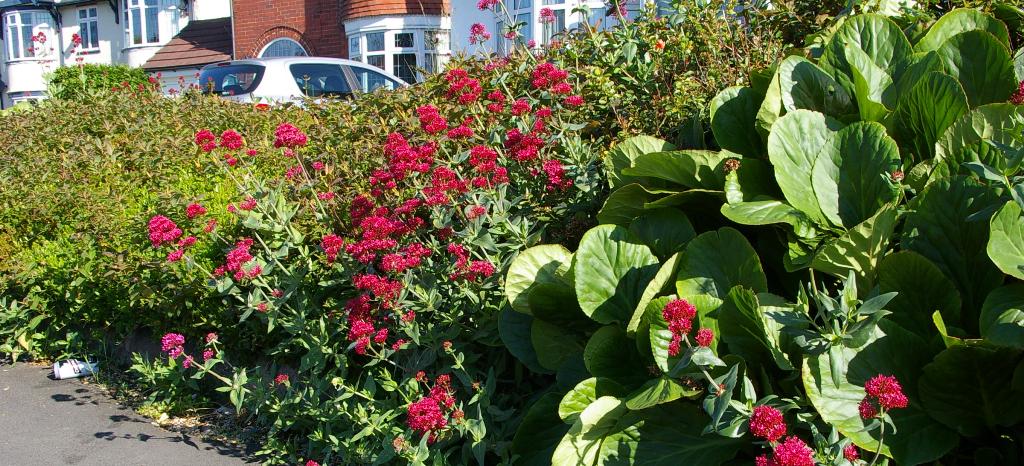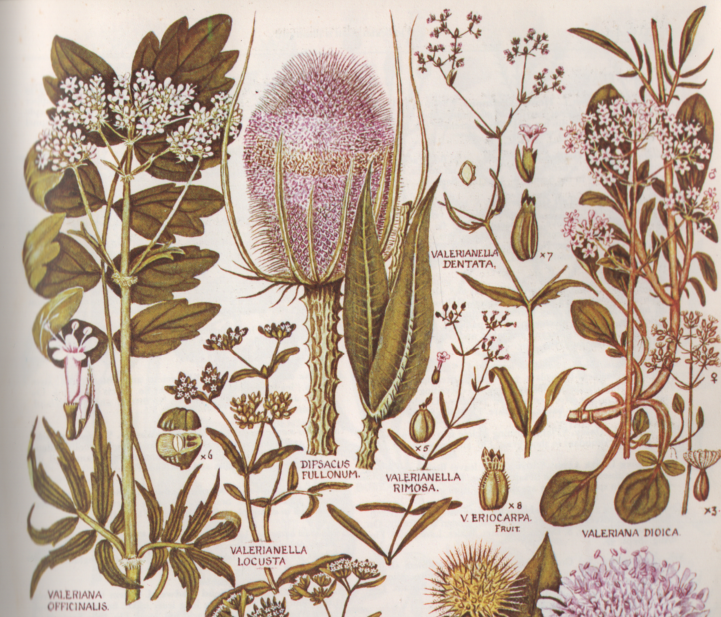The Valerian Family is again a small plant family in the B.I. and I choose to do this as it comes before the family of last week which was the Teasel Family.
The best known is probably the Common Valerian although perhaps the Red Valerian is now a lot more common, especially here in the Midlands!

More info can be found through the links provided from online websites and the pictures are by Mike Poulton (M.P.) and Ian Trueman (I.C.T.) of Ecorecord and Wikipedia Common.
If the plants are in the Flora of Birmingham and the Black Country a FBBC will be added behind the Common name of the plant in the main contents.

The Concise British Flora in Colour by W. Keble Martin
Above also the other half a page of Plate 43 in the Concise British Flora in Colour, showing mainly some members of the Valerian family. In the last post the Teasel family half was shown. The Common Teasel is also mixed in the picture above. This book was aquired by myself for the Kew Diploma Course in 1986 as one of the reference books to get! Still a beautifully illustrated book with 1486 species illustrated in 100 plates of all the flowering plant families of the B. I. The work was completed by W. Keble Martin in 60 years and first published in 1965.
Contents:
The Valerian family only has 3 genera:
Valeriana
Plants of the World Online accepts over 420 species and hybrids. In the B.I. 4 species can be found but 2 are true natives.
Centranthus
There are about twelve species in the genus but we know only C. ruber, which in non native.
and Valerianella
73 species are listed in Wikipedia but in the B.I. we know of 5 species; 2 native and 3 are Archaeophyte. Ripe fruits are essential for determination of the correct species.(Stace)
Continue reading “The Valerian Family and its uses in the B. I.”